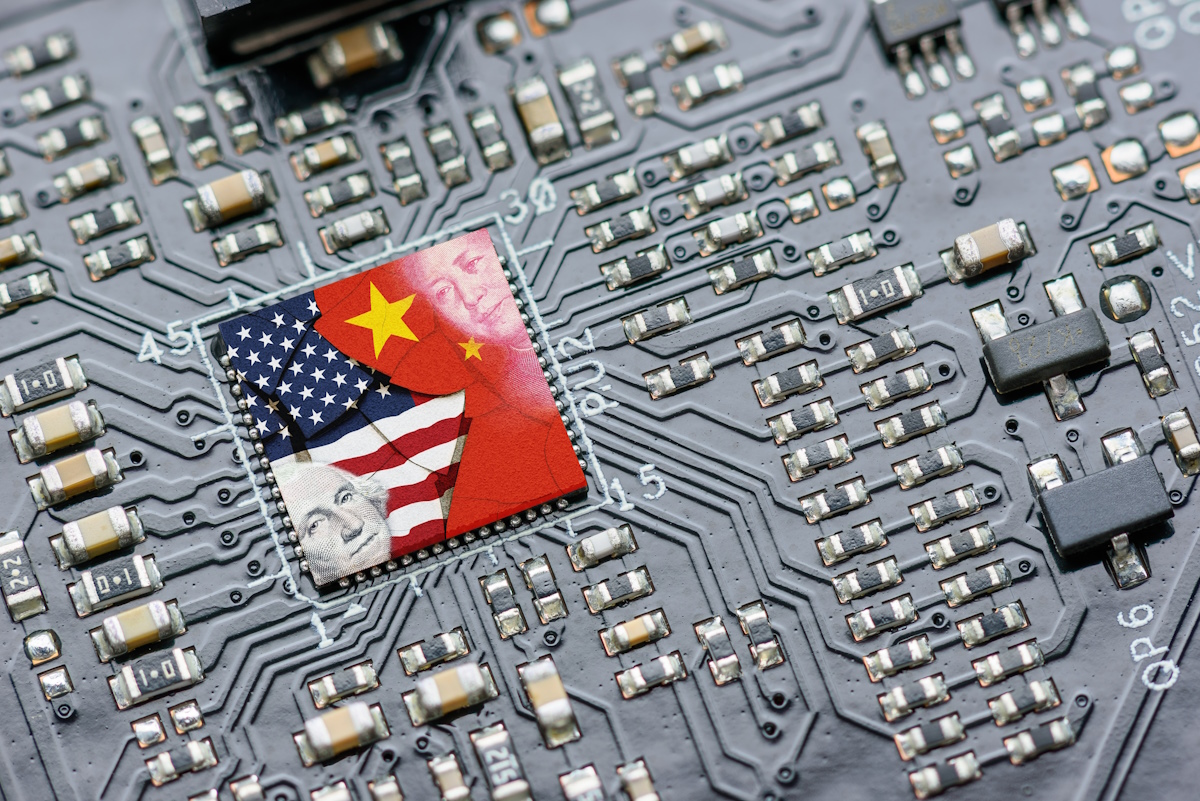As the rivalry between China and the United States over semiconductor intellectual property and manufacturing intensifies, recent studies indicate that the US is gaining a significant lead in the chip war with China. The competition, which has global economic and security implications, has seen the US leveraging strategic investments and sanctions to bolster its position in the semiconductor industry.
A comprehensive report by the Semiconductor Industry Association (SIA) and Boston Consulting Group (BCG) forecasts a steep increase in the US semiconductor manufacturing capacity. According to the report, the US is on track to more than triple its capacity and control nearly 30% of advanced chipmaking by 2032. By then, the US could be producing 28% of chips below the 10-nanometer level, whereas China is projected to produce only 2%. Currently, neither country has the capability to manufacture these advanced chips.
The CHIPS and Science Act of 2022, which allocated $39 bn to enhance US chip manufacturing capacity, has been a significant factor in this projected growth. The report, titled “Emerging Resilience in the Semiconductor Supply Chain,” highlights that this investment will start yielding substantial results in the next decade.
A study by Citi Research underscores the urgency of this expansion. The study reveals that despite accounting for 25% of global semiconductor demand, the US only possesses 12% of the world’s semiconductor manufacturing capacity, a sharp decline from 37% in the 1990s. “That has sparked concerns about a threat to national security given China’s efforts to gain a significant foothold in this vital industry,” the Must C Citi Research report stated.
In addition to the CHIPS Act, the US has implemented a series of sanctions targeting China’s semiconductor sector. Since 2017, starting with actions against ZTE, the US has tightened export controls on advanced semiconductor production equipment and high-performance computing chips. The US Commerce Department’s Bureau of Industry and Security further intensified these restrictions in October of last year.
China chip war: Europe, Japan, India strengthen their own semiconductor industry
The global landscape of semiconductor manufacturing is also evolving. The European Union has introduced the European CHIPS Act, while countries like Taiwan, South Korea, Japan, and India have launched various incentive programs to support their chip industries. Japan, for example, aims to attract $64.2 bn in investment to triple its domestically produced chip sales to approximately $96.3 bn by 2030.
India is also making substantial investments. The interim 2024 Union Budgetsaw an increased allocation for the semiconductor and display manufacturing sector by 130% ($83.28 mn). In Feburary, the government approved three new semiconductor manufacturing facilities.
South Korea’s government is supporting an estimated $246 bn in spending on homegrown technology, including a $7.3 bn chip program expected to be announced soon.
Despite these global efforts, China is not idly standing by. According to Bloomberg, China has more semiconductor plants under construction than any other country and has committed over $142 bn in government incentives to build its domestic semiconductor industry. However, John Neuffer, president and CEO of SIA, noted, “China seems to be putting a lot more energy into the so-called legacy chips.”
Chris Danely, Head of Technology & Communications Research and US Semiconductors Analyst at Citi, commented on the geopolitical implications, stating, „As China pursues self-reliance in semiconductor manufacturing, the US and its allies are seeking to blunt China’s impact via sanctions and subsidies such as the CHIPS Act. While we believe China will have success in semiconductors and slow the growth of non-Chinese makers, we also envision increased equipment spending from subsidies.”
Danely commented further that higher costs might prevent the CHIPS Act from “doing much to bring leading-edge manufacturing back to the US.”










 Australia
Australia China
China India
India Indonesia
Indonesia Japan
Japan Malaysia
Malaysia Philippines
Philippines Singapore
Singapore South Korea
South Korea Taiwan
Taiwan Thailand
Thailand Vietnam
Vietnam
 Germany
Germany Hong Kong
Hong Kong Switzerland
Switzerland Singapore
Singapore
 United Kingdom
United Kingdom








